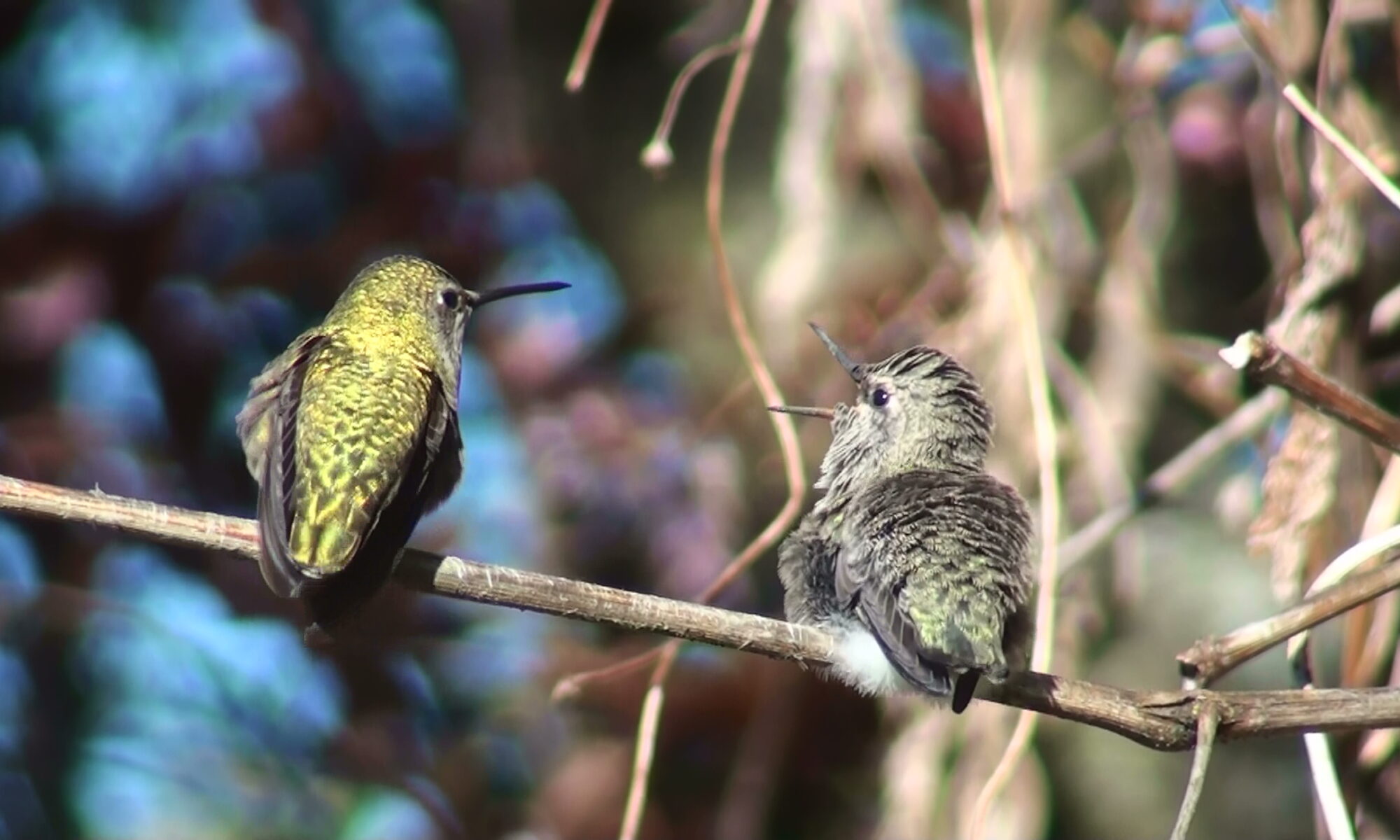 July 21 2014
July 21 2014
The last month has been spent filming the unlikely. By that, I mean Holly’s nest. Holly built a nest only 2 or 3 feet off the ground in a holly bush right beside a deer path. If a deer so much as turned her mouth to the grass beside the branch the nest would likely be spilled. I first noticed Holly on June 2nd and she had just laid an egg. The next day I saw two in the nest. I expected the nest to get wiped out by forest traffic, so I hesitated to invest too much time in filming it, but given it’s easy accessibility, I really had to film what I could. I don’t get too many chances with this good a vantage point. I filmed her sporadically to watch for activity. After 17 days, the chicks hatched on June 19th and I was able to spend a good part of the day on the 21st filming the nest. Things were going really well for the chicks up until about June 28 till they were infested with flower mites and the crows showed up. I don’t usually get so much crow activity, but I think they had a healthy batch of chicks and they hunted as a family unit. This often caused much cheeping and chirping among the hummingbirds as they united in chorus to drive the crows away. I think the Coopers Hawk has moved away because it used to keep the crows out of this section of Hummingbird Hills. Hummingbirds actually like nesting near raptors as it tends to dissuade crows from becoming too mouthy in their area. Now with no top raptor in the forest, the crows would pass through Hummingbird Hills and take up perches in the trees while all the hummingbirds freak out. The best defence a hummingbird can employ is a loud and persistent chirping sound. You can hear that in the video too when the crow is on camera. I got lucky with that shot because as I panned down to the nest, Berry hoisted her little butt up to the nest edge and pooped. I had to put it in the video. Here’s a video showing some of the highlights of their time in the nest. http://youtu.be/h2rGGPMErjE
It was on one of the crow’s hunting trips that I saw them wipe out Gina’s nest in the Oak tree. Gina put up a valiant defense, but her loud persistent clicks and chirps lost out to a healthy appetite and the crow won. If it’s any consolation, I think the crow went deaf. There is a photo of the occasion in the short video in this blog.
The flower mite infestation started about June 27 with just a few but soon grew to biblical proportions. Flower mites usually hitch rides between flowers by jumping on a hummingbird at one flower and leaping off at another. What the flower mites weren’t expecting was a stop at the nest and a lot of them seemed to like it there. Perhaps they found some food in the nest, like little spills from the feedings. After a few days, there were so many mites on the chicks it looked like rush hour at a Tokyo Train station. There was a mass exodus of mites exchanging rides at each feeding. Studies have shown that flower mites can eat up to half the nectar in a flower which leaves less for the hummingbirds but there’s a lot of food to eat at this time of the year so it doesn’t stress the birds. I think the sheer amount of mites on their faces must stress them a bit though. It kind of made me itchy to watch. After 21 days, Berry and Bush fledged, and I was able to catch it on camera. After a couple of days, I couldn’t spot any flower mites on them. I think once they are able to scratch them off and fly away, instead of being nest-bound, the mite numbers drop dramatically.
Holly, Berry and Bush beat the odds, No deer or person crushed the nest, the flower mites didn’t kill them and the crows missed them too. No one is more surprised than me, it’s one of the most exposed nests I have ever seen and I’m glad I chose to follow it as closely as I did.
